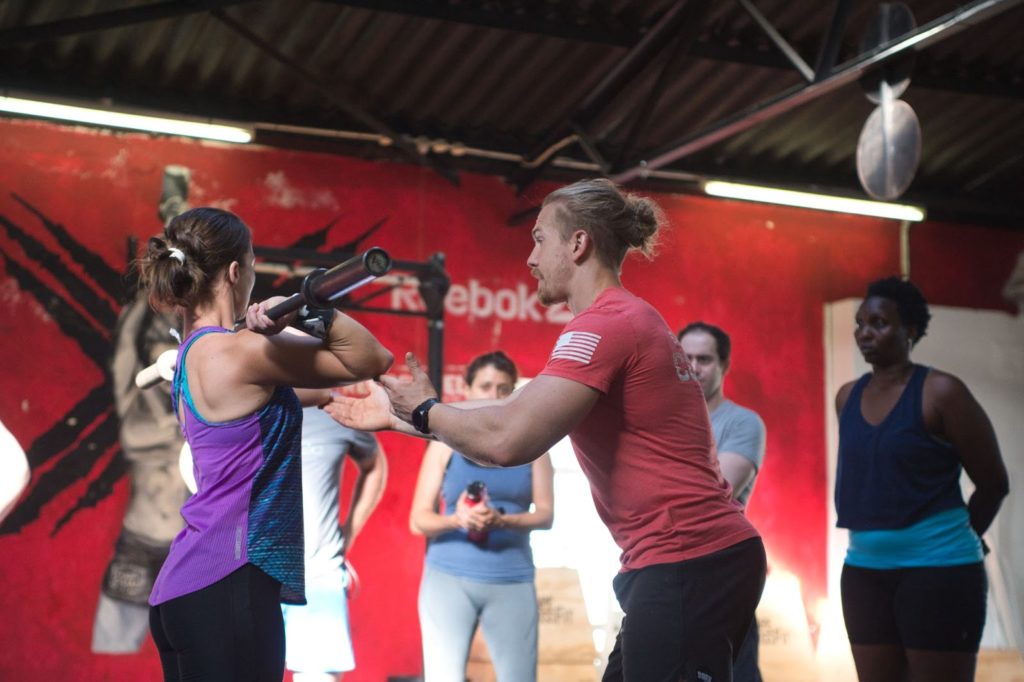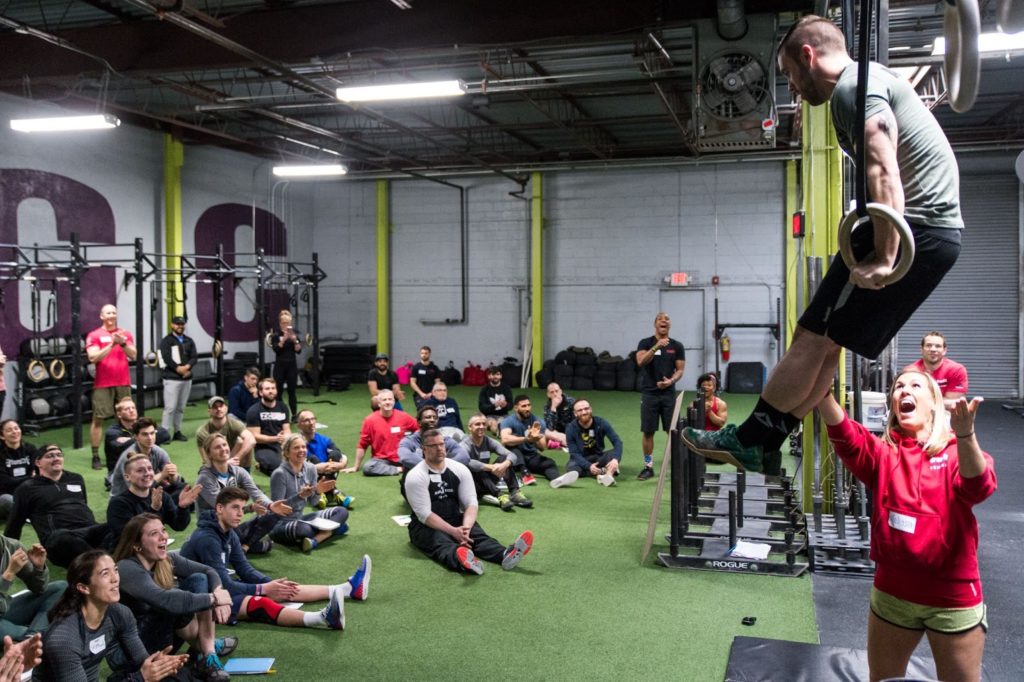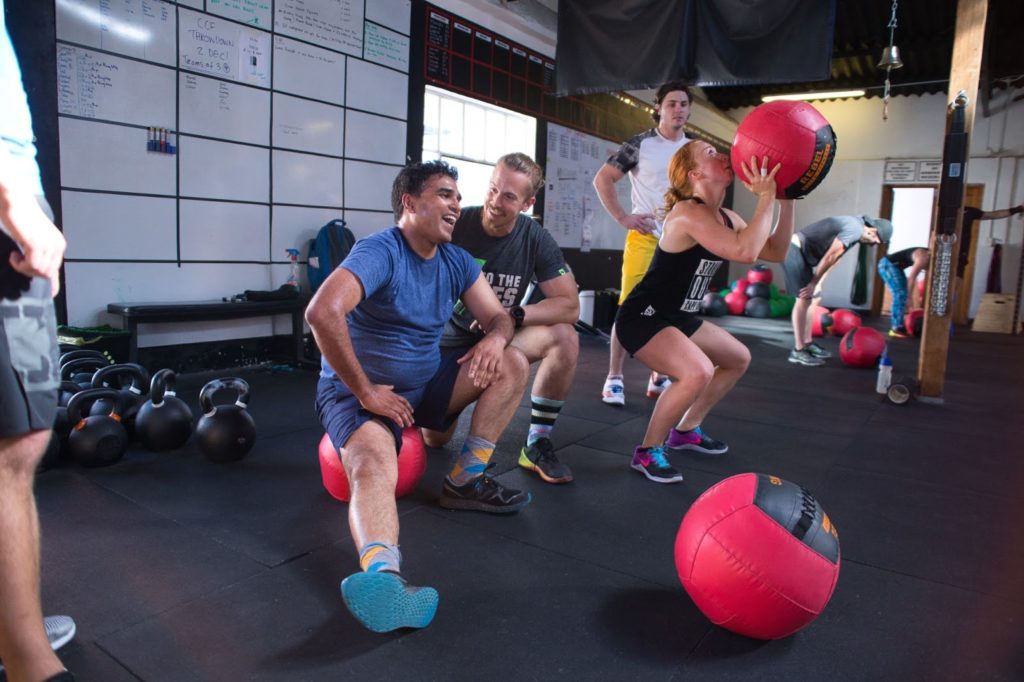The effect of coaching expectations and the role they play in helping individuals reach their potential
Great coaches know every interaction with an athlete is an opportunity to lead them toward their goals. New athletes often start their CrossFit journeys believing they are somehow limited and incapable of change. There is a tendency to believe in the status quo, often supported by previous experiences with failure. But coaches — and their expectations — have the power to create new and positive beliefs for their athletes. Positive expectations foster motivation, which leads to effort and small successes that further drive an athlete’s belief that they can achieve their goals.

A coach’s expectations for an athlete often create a self-fulfilling prophecy and feedback loop that works in both directions. Ultimately, the coach’s interactions and attitude will dictate which direction an athlete’s development will spiral.
As a leader, the CrossFit coach is responsible for setting the bar — and the best coaches set it as high as possible. If it is not apparent why, consider that no one can predict the future. The athlete standing in front of us bears no resemblance to the athlete who will exist in five years’ time. The more experienced the coach, the more evidence they will have collected over the years attesting to the fact that incredible transformation is possible. They therefore will naturally set the bar high, knowing that anything less will limit the athlete’s potential. The more success the coach has had in developing athletes, the more success they will expect from athletes they work with in the future.
Experienced coaches know it’s easy to underestimate an athlete’s potential. The beginning coach who may not have seen any transformation firsthand will be more likely to set the bar too low based on conservative expectations. This is understandable; it’s hard to believe that someone can lose 100 lb. and then learn how to perform muscle-ups and handstand push-ups if you haven’t seen it happen with your own eyes — especially if that person tells you every diet and exercise program they have tried has failed.
But the muscle-up and other complex gymnastic skills are important parts of the program — everybody can and should learn them. The most unlikely gymnast is exactly the person who needs to be inspired by gymnastics, because dreams drive motivation, and every improvement will echo loudly in their life.

The journey will vary based on the starting point, but the destination should be the same for everyone. Great leaders know that the difficulty of the path should never impact choosing where it leads for those in their charge.
Great coaches automatically expect great things, which leads to their athletes putting in great effort to produce great results. Poor coaches expect minimal change, leading to their athletes putting in minimal effort and, more often than not, achieving minimal results. This is why it is so important that, as coaches, we upgrade our expectations, because they are a primary driver of athlete behavior and success. Time and time again, we can find examples of athletes exceeding what we previously thought possible. The ability to see true potential beyond what is currently visible is at the heart of leadership.
It is not a new idea that positive expectations positively influence performance, and the mechanism behind this effect is well understood. In 1985, Robert Rosenthal and Elisha Babad noted, “When we expect certain behaviors of others, we are likely to act in ways that make the expected behavior more likely to occur” (1). Psychologists refer to this as the Pygmalion Effect, whereby an educator’s higher expectations of a student lead to higher performance due to the positive way the educator treats the student. It is not intentional — the change in the educator’s behavior is subconscious.
There is also a related and more damaging phenomenon called the “Golem Effect,” whereby lower expectations lead to lower performance. The takeaway for the coach is that the way we treat our athletes is driven by the way we perceive them, and while we may not be aware of it, it’s a measurable phenomenon (2).
So how do we counter this effect? The obvious solution is to have equally positive high expectations for everybody, but that is much easier said than done, because our biases are largely subconscious. The reality is that we are making judgments every time we interact with an athlete. Are they trying hard? Are their goals realistic? Are they overweight? Are they athletic? Are they listening to me? These judgments lead us to form an enduring set of expectations for the athlete. To illuminate this point, ask yourself an important question: “Which athletes in my gym do I dislike coaching?” Any athlete on this list is simply someone you do not naturally connect with and have judged negatively. Because of that, they are most likely victims of the Golem Effect, and your low expectations — that you may not even realize you have — are holding them back. Are your least-liked athletes also your poorest performers relative to their potential? The likely answer is yes, and that is a shocking realization, because it’s much more convenient to attribute poor performance to the athletes not applying themselves. They probably aren’t, but they also won’t start doing so until you start believing in them. It is a Catch-22, but it’s also an opportunity to step up and lead those you least want to but who need it most.

The remedy for the Golem Effect is to keep the bar high for everybody. This means no favorites. No segmented or modified programs for particular groups. No different expectations regarding intensity. No turning a blind eye to movement standards and points of performance. You must believe that every person in your gym is a future amazing athlete waiting for you to unlock their potential, regardless of their starting point (and perhaps bad behavior). This is why we “program for the best and scale for the rest.” By doing so, we are committing to setting the bar high, which ultimately affords even the most unlikely athlete the opportunity to unlock their hidden potential. That is true leadership: inspiring athletes on a journey they never dreamed they would take but always hoped for. Wherever the coach sets the bar, the athlete will reach, because it is human nature to do so. The more your athletes reach, the more favorably you will think of them and the more success they will get from the program as a result. So set the bar high and use the power of the Pygmalion Effect such that everyone wins.
References
- Rosenthal, R., & Babad. E. Y. (1985). Pygmalion in the gymnasium. Educational Leadership, 43(1), 36–39.
- https://inclusiveschoolcommunities.org.au/resources/toolkit/pygmalion-and-golem